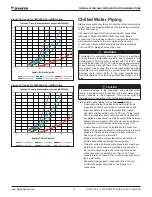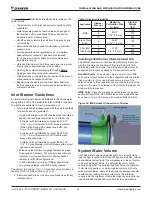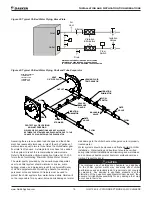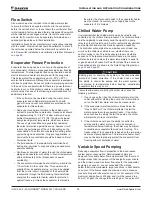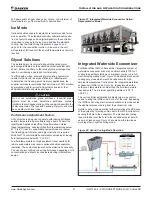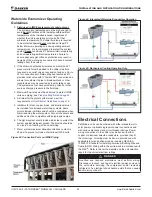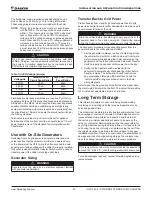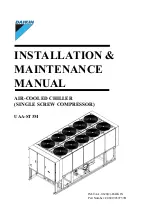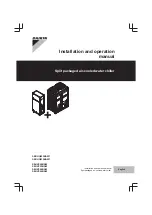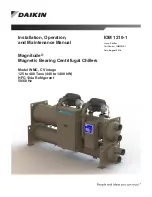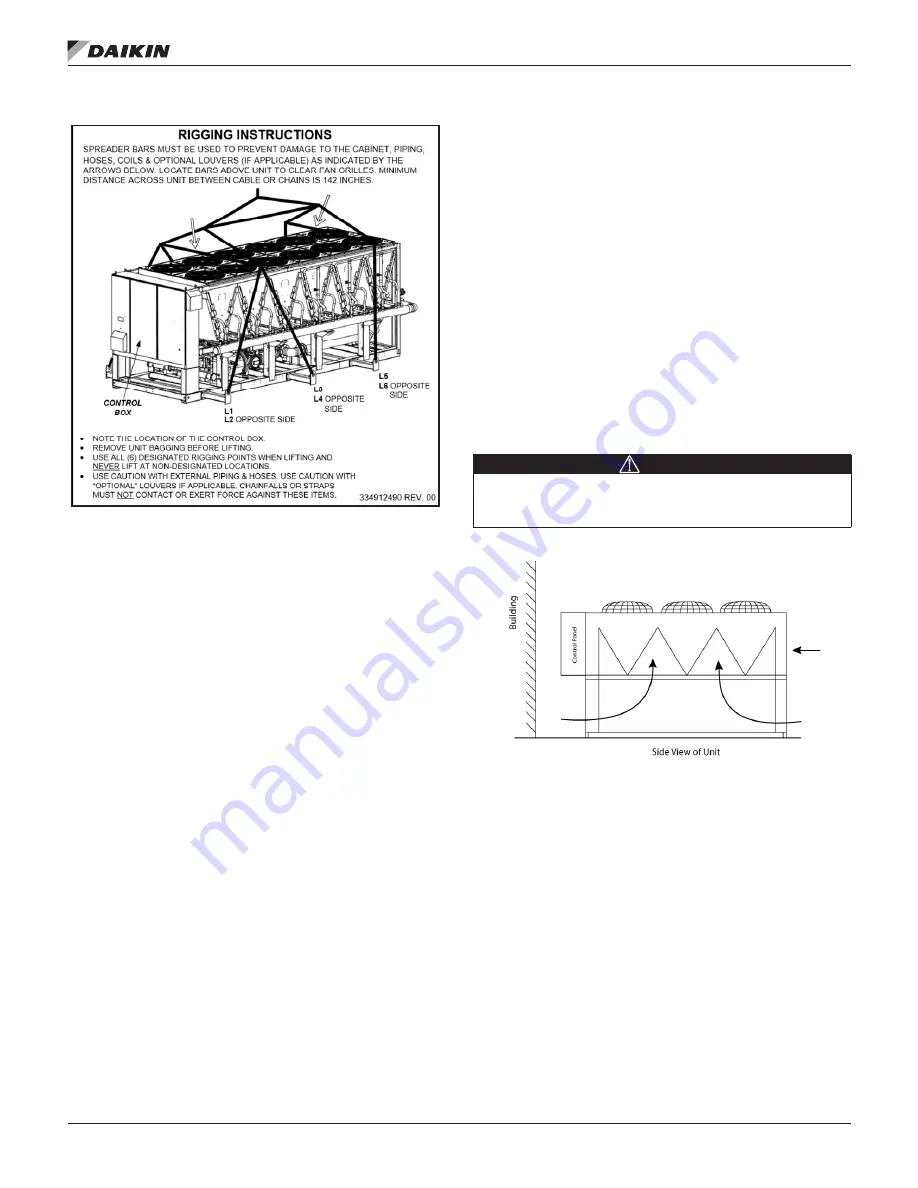
IOM 1242-8 • PATHFINDER
®
MODEL AWV CHILLERS
8
www.DaikinApplied.com
Installation and Application Considerations
Figure 2: Representative Rigging - AWV with IWSE Option
Unit Placement
Locate the unit outdoors and provide proper airflow to the
condenser, see
. Using less clearance than shown for
required clearances can cause discharge air recirculation to
the condenser and could significantly reduce unit performance.
Pathfinder
®
units are for outdoor applications and can be
mounted either on a roof or at ground level. For roof mounted
applications, install the unit on a steel channel or I-beam
frame to support the unit above the roof. Spring isolators
are recommended for all roof-mounted installations due to
vibration transmission considerations. Isolator information can
For ground level applications, the unit must be installed
on a substantial base that will not settle. Use a one-piece
concrete slab with footings extended below the frost line.
The foundation must be level within 13 mm (1/2 inch) over
its length and width and strong enough to support the unit
operating weight as listed on the unit submittal documents.
The addition of neoprene waffle pads (supplied by customer)
under the unit may allow water to drain from inside the frame,
which can act as a dam. Installation of optional spring or
rubber-in-shear isolators can also assist with drainage, see
for information
.
On ground level applications, protection against vandalism is
recommended; either by the optional factory-installed lower
wire mesh guards or louvers, or by a field installed screening
fence. Note that the fence must allow free flow of air to the
condenser coil for proper unit operation. Upper wire mesh coil
guards are standard.
Mounting Hole Access
The inside of the base rail is open to allow access for securing
mounting bolts, etc. Mounting location dimensions are given in
Dimensional Drawings beginning on
Service Access
The control panels are located on the end of the chiller and
require a minimum of four feet of clearance in front of the
panels. Compressors, filter-driers, and manual liquid line
shutoff valves are accessible on each side or end of the unit.
The evaporator heater is located on the barrel. Do not block
access to the sides or ends of the unit with piping or conduit.
These areas must be open for service access.
Minimum service clearance spacing on one side of the unit
should be increased to 8 feet to allow for coil removal, see
. The condenser fans and motors can be removed
from the top of the unit. The complete fan/motor assembly can
be removed for service. The fan blade must be removed for
access to wiring terminals at the top of the motor.
DANGER
Disconnect, lockout and tag all power to the unit before
servicing condenser fan motors or compressors. Failure to do
so can cause bodily injury or death.
Figure 3: Air Flow
Clearance Requirements
Sufficient clearance must be maintained between the unit and
adjacent walls or other units to allow the required unit air flow
to reach the coils, see
and
will result in a capacity reduction and an increase in power
consumption. Graphs on the following pages give the minimum
clearance for different types of installations and also capacity
reduction and power increase if closer spacing is used. The
graphs are based on individual cases and should not be
combined with other scenarios.
The clearance requirements shown are a general guideline,
based on individual cases, and cannot account for all
scenarios. Such factors as prevailing winds, additional
equipment within the space, design outdoor air temperature,
and numerous other factors may require more clearance than
what is shown. Additional clearances may be required under

















